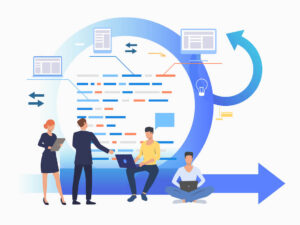Futurists have been longing for a digital dream. A dream in which the driver becomes a passenger and relaxes inside his car, reading his or her (still paper) newspaper. No matter how thick the traffic is, the passenger enjoys a sip of his intense espresso. For several years, executives of tech and automobile companies have been promising about self-driving cars filling the roads and streets. As they keep raising the expectations, self-driving cars are still making stupid mistakes not to mention the fatal accidents. While, the concept of fully autonomous vehicles are linked with disappointments, the people have started running out of steam.
High expectations
This is mainly because we expected too much too soon and disregarded the fact that the short history of self-driving cars still depends on the artificial intelligence research. Even though the scientists vision AI as very advanced humanoid partner making decisions and taking initiatives, the reality is much more challenging than we thought. But the efforts and innovation have been slowly but surely evolving in narrow AI, the type of artificial intelligence that focuses on solving specific problems. Despite the fact that we still have a long way to catch the scientists’ vision, the technology is already ready for narrow domains, such as driving and controlling forklifts in warehouses and industrial complexes.
The bottleneck
There are some obvious similarities and discrepancies between developing AI for passengers on the road and vehicles for logistics. “First of all the common ground is to develop AI in the safest possible way,” says the CEO of Makhina, Mehmet Ali Çalışkan and adds, “Safety has become an increasingly important, even the top issue as artificial intelligence algorithms are finding their way into the physical world more and more.” According to Çalışkan, the unpredictable and complex nature of of self-driving cars has also caused regulation problem. For instance, the laws or the proper rules haven’t been universally made and accepted by the manufacturers and the governors. “Who will be held responsible remains a huge unknown,” says Çalışkan, “and this creates the real bottleneck against the advancement of driverless cars.” On the other hand, the challenges of automating forklifts are fewer and easier to master, and they’re already becoming a reality in warehouses and industrial complexes.
The designer and engineering teams don’t have to struggle against variables such as the pedestrians in the street, heavy rain, snow, and many other situations while developing autonomous vehicles like forklift. “Of course the working environment such as a warehouse contains risks, but almost all of them are predictable and thus preventable,” says Çalışkan. By judging from the figures, it is estimated that it will take another five to ten years for self-driving cars to become a normal sight in streets while the forklift industry is ready to be integrated with logistics.
The the era of smart forklifts
Every year at lease one million forklifts are sold. But the main challenge for the companies in not to purchase these forklifts but to hire the right operator with the right skill. Every forklift is used by more than one operator, sometimes in two or three shifts. So the operating costs of a single forklift can raise to more than the forklift itself. Besides, not all companies are lucky enough to hire operators as the increasing demand result in shortage of skilled, trained and experienced forklift drivers. In order to cope with this situation, there are companies investing in AI hardware and software. Their main goal is to install hardware into existing vehicles and turn them into smart ones without requiring a change in the warehouse’s infrastructure.
Thanks to the latest cameras with computer vision algorithms, lidars and advanced sensors, forklifts now can scan their environment detect objects around them in a 3D map. They can navigate through obstacles and most importantly identify the objects to lift and move around. “This is an amazing opportunity for warehouses to increase their efficiency. Smart forklifts can communicate with each other as well as they are connected to a center hub,” says Çalışkan.
A new wave of mass unemployment?
Many economists are already concerned about the possible results of intense artificial intelligence usage. However, experts believe that there is a solution to this problem. The tech companies never neglect the human factor as they work on hybrid solutions. Hence, the operator and AI can work simultaneously depending on the sensitivity of the task, hence the smart forklifts will not put forklift operators out of their jobs. While the humans will be responsible for specific situations or human-demanding jobs, the auto-pilot will be on during heavy lifting or automatable tasks.




